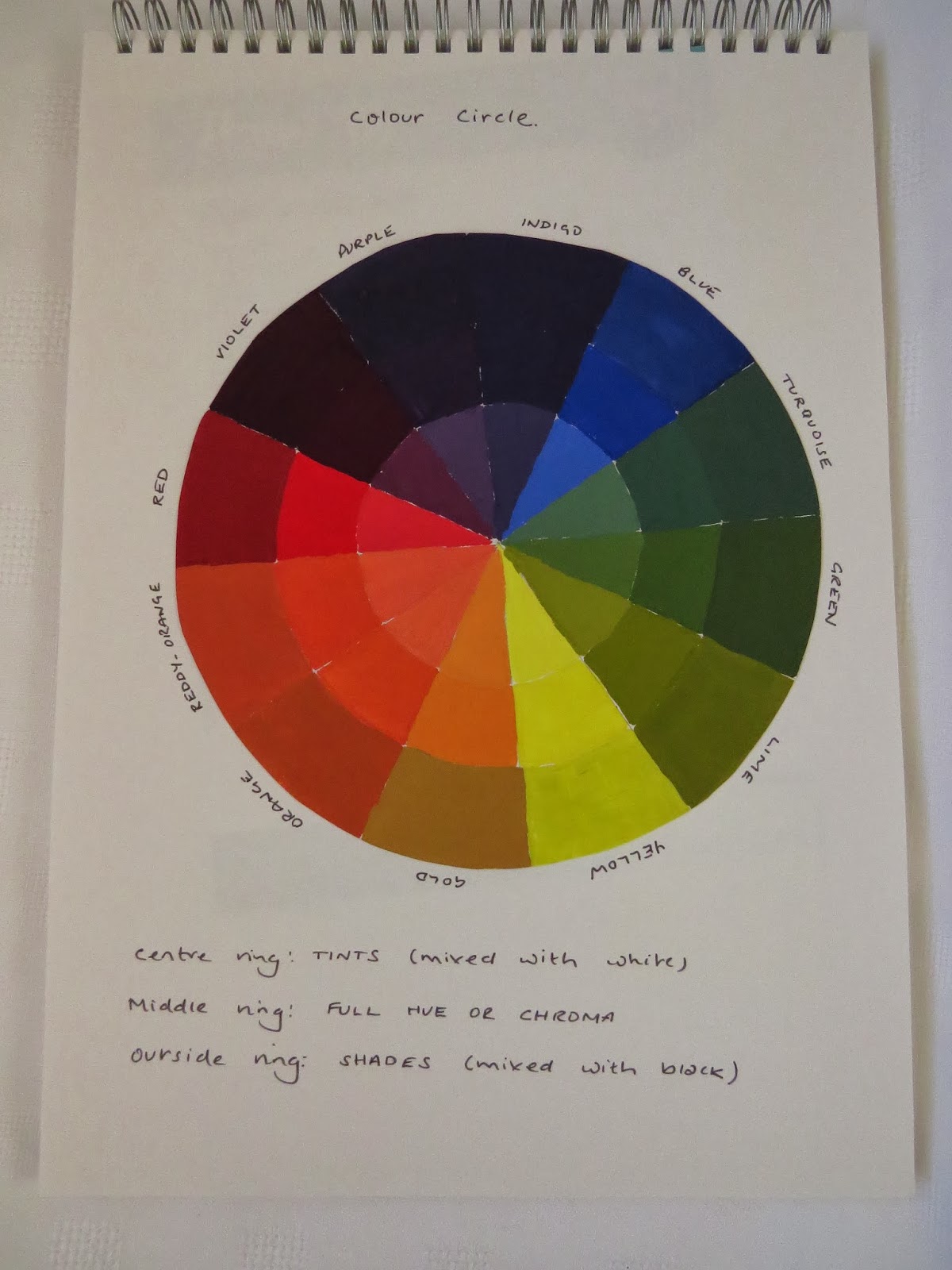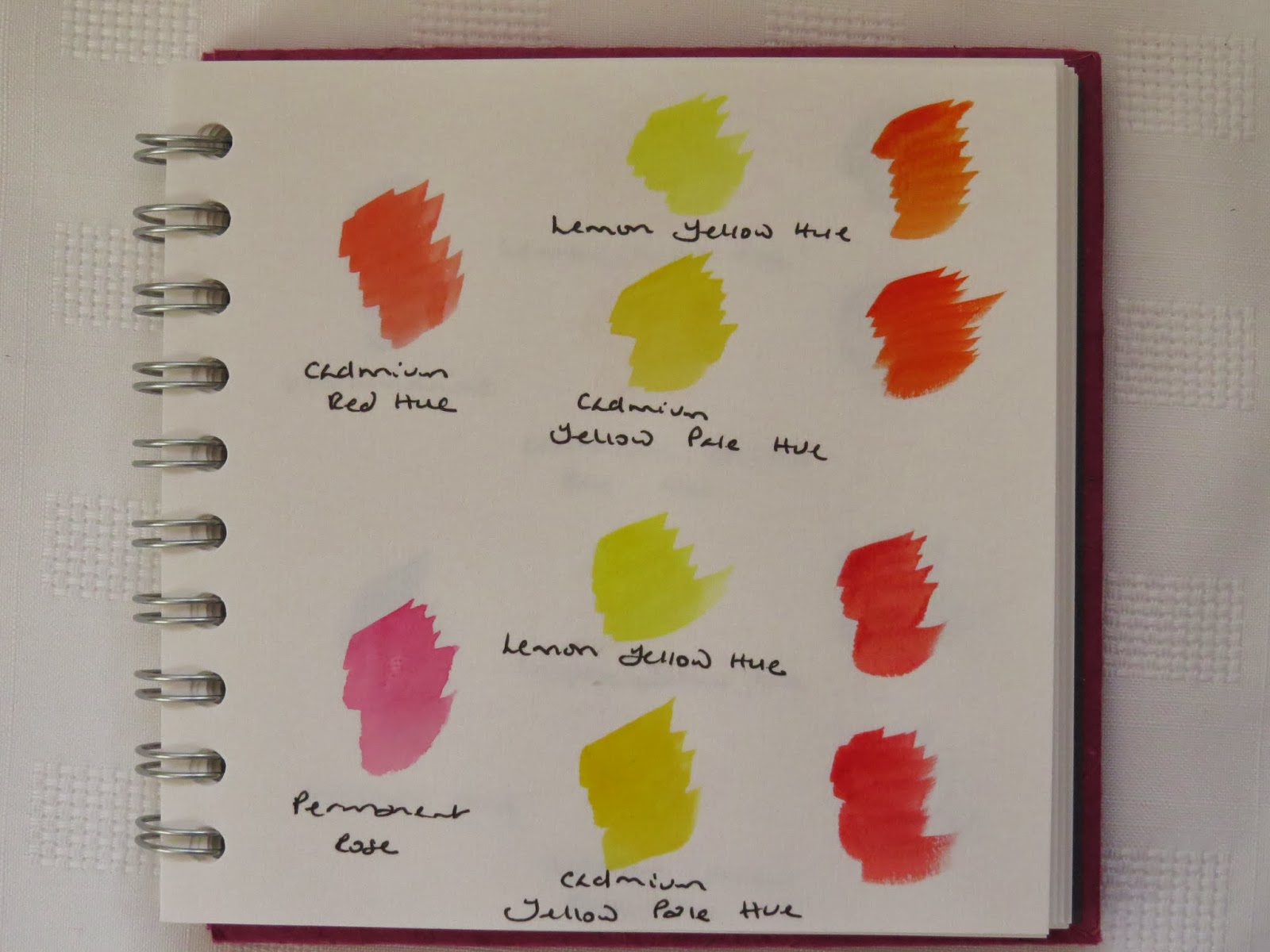Obtaining a collection of papers and colouring them with brusho dyes was an exciting exercise. I chose to use the complementary colours blue/orange, as I already had a collection of various fabrics and threads in this colour scheme, from a previous project that I had work on, in an embroidery group I belonged to.
I used cartridge, tissue, old newspapers, magazines,wallpaper lining, paper tableclothes and packing paper, plus various handmade and embossed papers.
I loved seeing the effects of the dyes on the different papers, especially on the pre-printed tissue paper. By adding differnt shades of the same colour, much more interest and texture was created on the paper. It is definetly an exercise I will repeat. However, my favourite sheets was created by accident. It was a sheet from a TV guide produced for a newspaper. The paper is matt and was used to soak up exccess dye during the exercise. The random patterns created from both the blue and orange dyes looked great over the printed pages. I think that the cartridge and lining paper will be used in the main for the design work in the next few chapters as they are stronger and easier to cut into interesting shapes.
Printing onto Coloured Paper.
Taking a shape of interest from a star on a mood board in chapter 1, I created two stamps from a rubber block. These simple printing blocks were made using the same source, but I changed the size, to help create different patterns.
I followed the suggested patterns given, but didn't find them that easy to create. As the block wasn't transparent, it made it hard to see when the actual print would be made. I wasn't inspired by the patterns being created and didn't feel that I would personally use this technique in my own work.
Inspired by the work of Hiliary Beattie, I decided to make to some stamps using mount board and foam. The same design source was used, but these would print more easily over a large area, and enable repeat patterns to be produced quickly. I thought that this would be more exciting when printing onto fabric.
I really liked the effect these printing blocks gave and how quickly the pattern was created. The patterns were printed onto paper first and then sprayed with ink. This had the effect of masking the colour of the printing, which then led me to over print the initial work (see samples b, c and d). My favourite sample was c, where both of the stamps were used showing different patterns using two sizes. This printing is something I would like to develop. I have now discovered that you can buy self adhesive foam, which will make it easier to create the blocks. I covered my foam with double-side tape, which left a sticky surface where there wasn't any foam . I painted the whole stamp with dilute PVA glue to seal it, but this didn't last when I wanted to clean the blocks to use again. I'm told emulsion paint also works.
 |
| (a) |
 |
| (b) |
 |
| (c) |
Sheet (d) was created using a piece of packaging as a stamp, I like how you could over stamp but still see the paper behind. This effect would be good on a special or fussy background, wher you didn't want to loose its effect. At a later stage I will try this on the papers coloured with both the blue and orange brusho dyes.
 |
| (d) |
Star Shapes from Coloured Paper.
This exercise created lots of interesting and pleasing results. It was easier to use scissors or a craft knife to cut the stars out, but it made me think that there are other possibilities. The patterns that could be made are endless, but I like the shapes being produced when I started to overlay stars and lay them other than in a central postion.This is a new idea to me and something I'm looking forward to exploring more when looking at more design shapes in both paper and fabric.



















